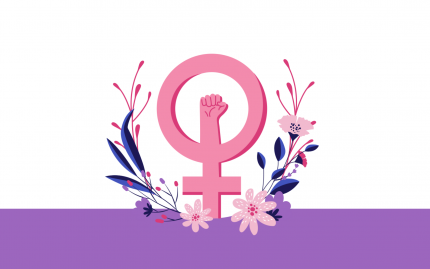
The Scriptcase team wishes you all a Happy Women’s Day! And we want to take the opportunity to pay tribute to all the women who, with great care, responsibility, intelligence and mastery, have contributed to the development of technology throughout history.
We understand that a woman’s place is where she wants to be, including in the technology industry. So to honor that day, we want to introduce you to 5 great names of women who have marked the history of the IT universe.
Organizing this rank was not an easy task, after all, how many important names have emerged and continue to emerge over time, women who carry on their shoulders the gift of innovating, managing teams and promoting developments, showing that they are not ‘fragile sex’ have nothing.
Ada Lovelace
The year was 1843, Augusta Ada King, but known as the Countess of Lovelace, was the woman responsible for creating the first algorithm in history, long before the existence of machines that could process it. In other words, this woman was able to produce the first code in the history of mankind.
It can be said that it was one of the precursors of what we understand today as computer science. Her mathematical skills were geared towards calculating a sequence of Bernoulli numbers.
Her work was brilliant, and even without the necessary technology to develop her ideas, all the algorithms created by her were tested and proven years after her death, when the necessary machinery for the test came up.
Grace Hopper
Grace was the first woman admiral in the U.S. Navy as well as being the first woman to graduate mathematics at Yale. She was one of the creators of COBOL, a programming language for commercial databases.
A very famous story, but not yet fully confirmed, has to do with a term that we use a lot, the word “bug”. That’s because, according to the story, she would have solved a data processing problem by removing an alleged moth that created a nest inside the server, so she ended up using the analogy that debugging was necessary, or in other words, remove the “ insect ”to troubleshoot failures.
Jean Sammet
Sammet was a very important woman in the area of technology, she was the creator of one of the first computer languages available. FORMAC, which came into use in the late 1960s at the hands of IBM where it worked for about 27 years at the forefront of cutting edge computing technology.
She always understood her role, and for that reason she participated in several organizations that aimed at the inclusion of women in the technology scenario mostly occupied by men.
Karen Sparck Jones
Karen was responsible for important innovations, she was one of the creators of the concept of “inverse of frequency in documents”, a logic that serves as a basis for what we understand today as search and content search systems. To make it even clearer, this concept serves as a foundation for large technology companies like Google, for example.
In other words, she was responsible for establishing the entire process of searching and mining data extremely quickly and accurately, all of this through the search for terms that are crossed with a filtering system defining the supply of the topics and the quality of the results.
Radia Perlman
Radia is a software designer and network engineer, who was responsible for creating the STP (Spanning Tree Protocol) protocol that improved the performance of connected systems by avoiding data loops, ensuring that information travels even in the event of problems.
Explaining the Perlman Protocol better, it allows the data to be able to analyze the presented scenarios and choose the best and fastest alternative for their final processing. It is as if the protocol answered which is the best way to choose in view of the various options presented, and furthermore, if the first option offers any difficulty, it also allows measuring which is the second best option and so on.
Pioneer and always concerned with the education and teaching of technology, she was the creator of a programming language for educational purposes as well, TORTIS, which was focused on the area of robotics.

Leave a Reply